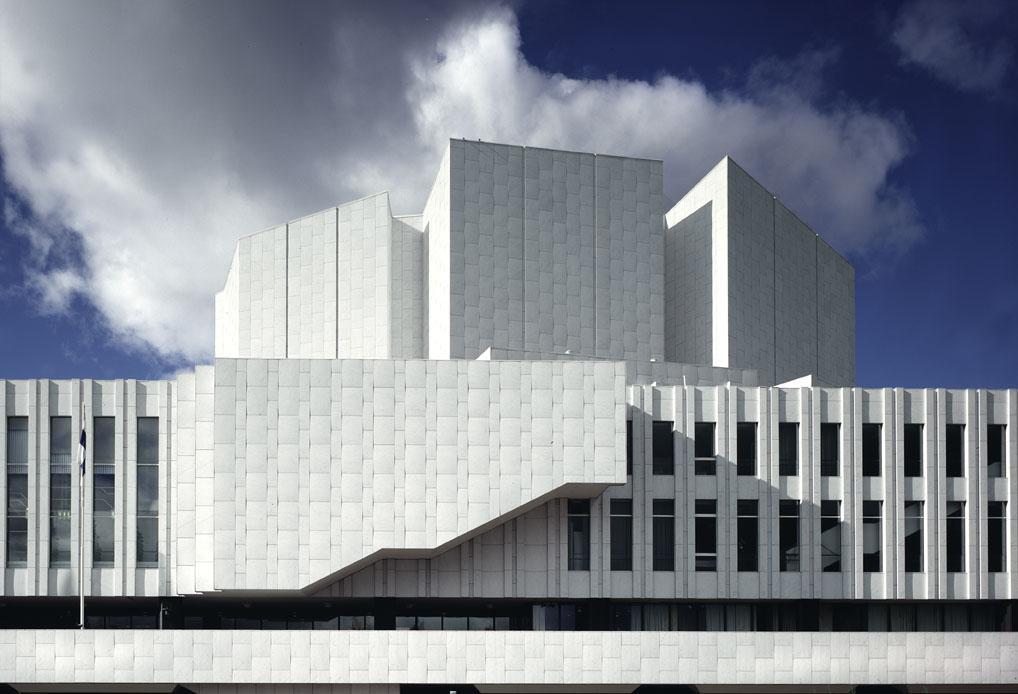
Embark on a journey that weaves through Alvar Aalto’s architectural imagination, stretching across Finland to the cultural heart of Rovaniemi and the historic charm of Turku.
This tour unveils a world where concrete, glass, and nature blend into a seamless, beautiful continuum. Marvel at the bold modernism of Helsinki’s Finlandia Hall, and experience the tranquillity of Säynätsalo Town Hall, a gem nestled in Lakeland. In Rovaniemi, bear witness to the administrative and cultural prowess of the Aalto Centre, including Rovaniemi City Hall, the City Library, and Lappia House. Further south, explore Turku to discover Alvar and Aino Aalto’s early modern buildings, pioneering a new architectural era.
As you drift from the urban vibrancy of the capital to serene lakesides and historic cityscapes, let Aalto’s vision inspire a new understanding of harmony between built environments and nature.
Tour in brief: A nine-day journey encompassing the architectural marvels of Alvar Aalto in Finland’s key cities. This package offers a comprehensive experience including accommodations, select meals,
entrance fees to notable attractions, and insightful guided tours. Free time is allocated for personal exploration and shopping, promising a full immersion into Aalto’s world.
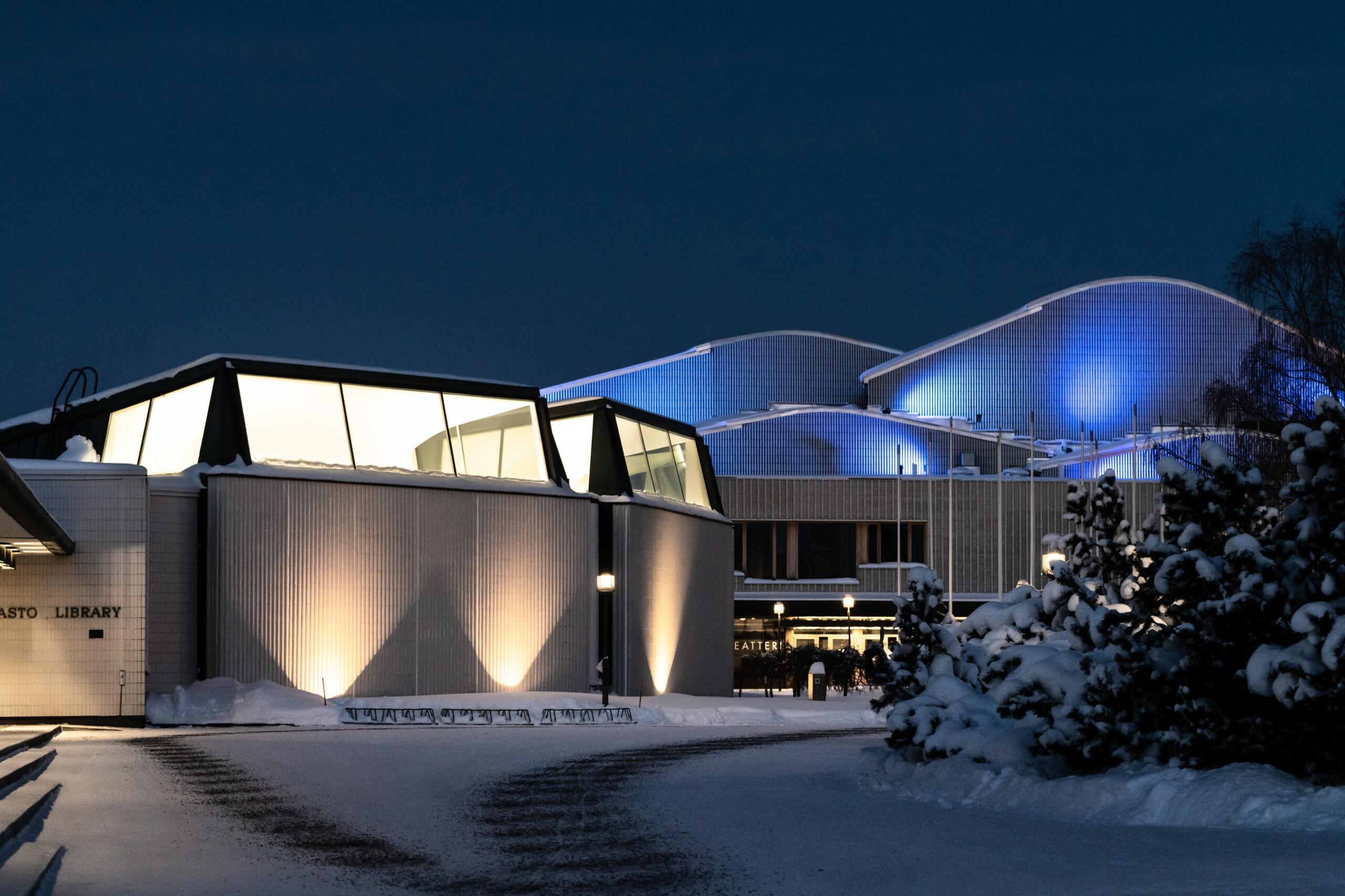
The Rovaniemi administrative and cultural center, Aalto center, is the only completed city center in Finland by Alvar Aalto, along with Seinäjoki.
The three buildings of the Aalto center – the library, Lappia Hall and the town hall – open like a fan shape towards the city center in a spacious park-like square. The library was the first to be completed in 1965. Lappia Hall was the last building that Alvar Aalto saw completed before his death. It was completed in two stages in 1972 and 1975. The design work of the town hall, completed in 1986, was led in Aalto’s office by his wife, architect Elissa Aalto.
The architectural highlights of the buildings are placed on the side of the square, where they form a spectacular entity. The upper windows of the library rise visibly from the rhythmically folded closed facade and bring natural light to the lending department. The upper parts of the stage halls of Lappia Hall rise like fells above the sleek facade line. In the town hall the council chamber has been formed like a crystalline tower, taller than the rest of the building.
In addition to the recognizable features of Aalto’s architecture, the buildings are bound together by the facade materials – light brick and ceramic tile. The materials for the interior of the buildings are well thought out, as are the furniture and lighting, which are partly from Artek’s collection, partly designed for the buildings by Aalto’s office.
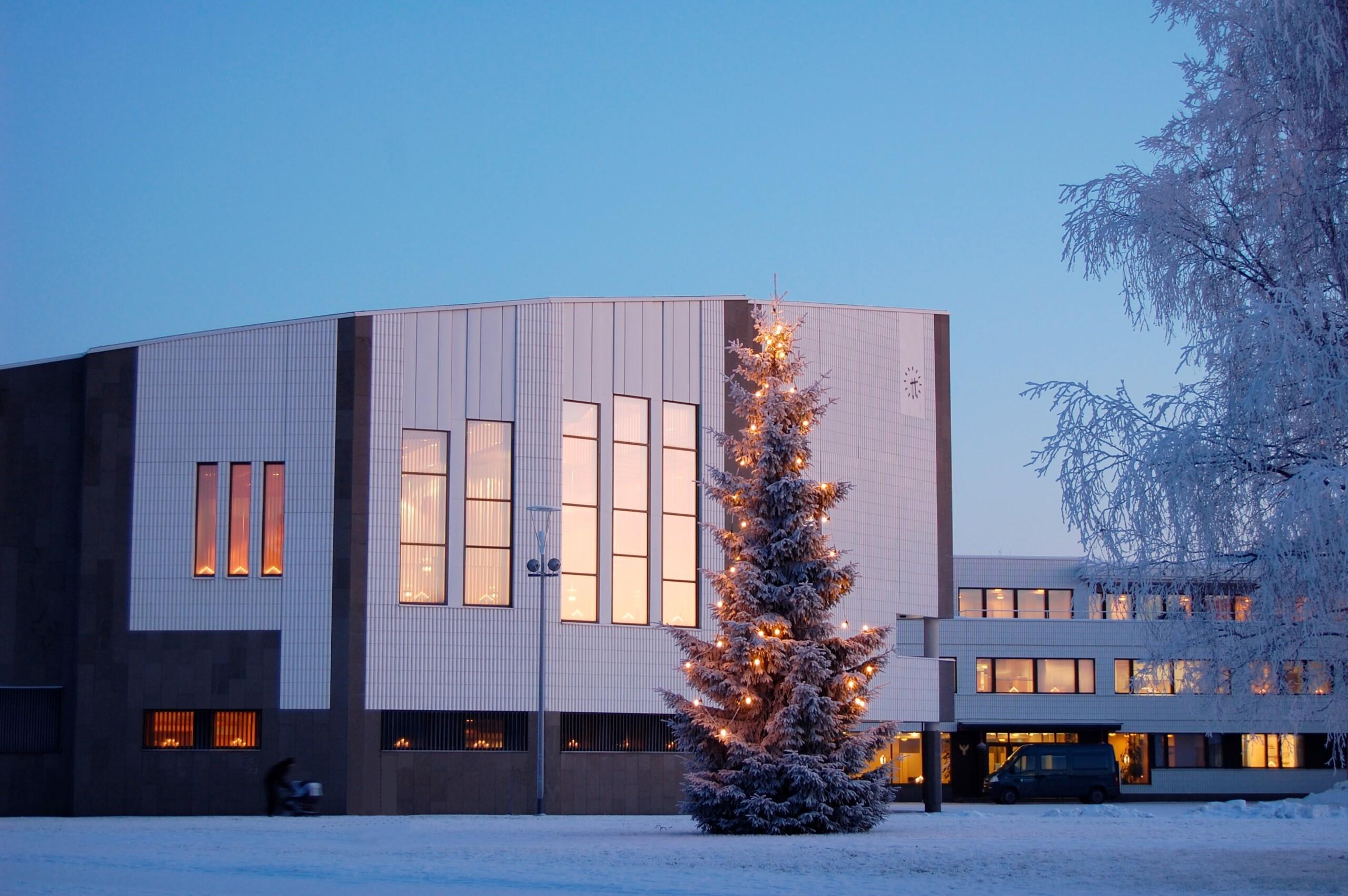
The completion of the City Hall in 1986 completed Rovaniemi’s administrative and cultural center, the Aalto Center. Along with Seinäjoki, it is Alvar Aalto’s only completed civic center in Finland. The City Hall was designed based on Alvar Aalto’s sketches after his death under the direction of Elissa Aalto.
The building complex consists of several wings in different directions, which are dominated by the council hall with its sculptural tower part. In connection with the main entrance of the building, are the most important facilities of the town hall, such as the council hall, meeting rooms and the mayor’s room. In particular, the crystalline council hall stands out from the building complex as a tower higher than the rest of the building.
Like in the other buildings of Aalto Center, the interior of the City Hall consists, for example, of Lapland marble and natural-colored wood. The City Hall’s furniture and lighting are partly Artek’s production and partly designed for the building by Aalto’s office.
Kain Tapper’s environmental artwork “Birth of the Mountains” was placed in the square of the Aalto Center after the completion of the town hall in 1988.
Rovaniemi City Hall is closed for the time being due to renovations that are scheduled to be completed in 2026.
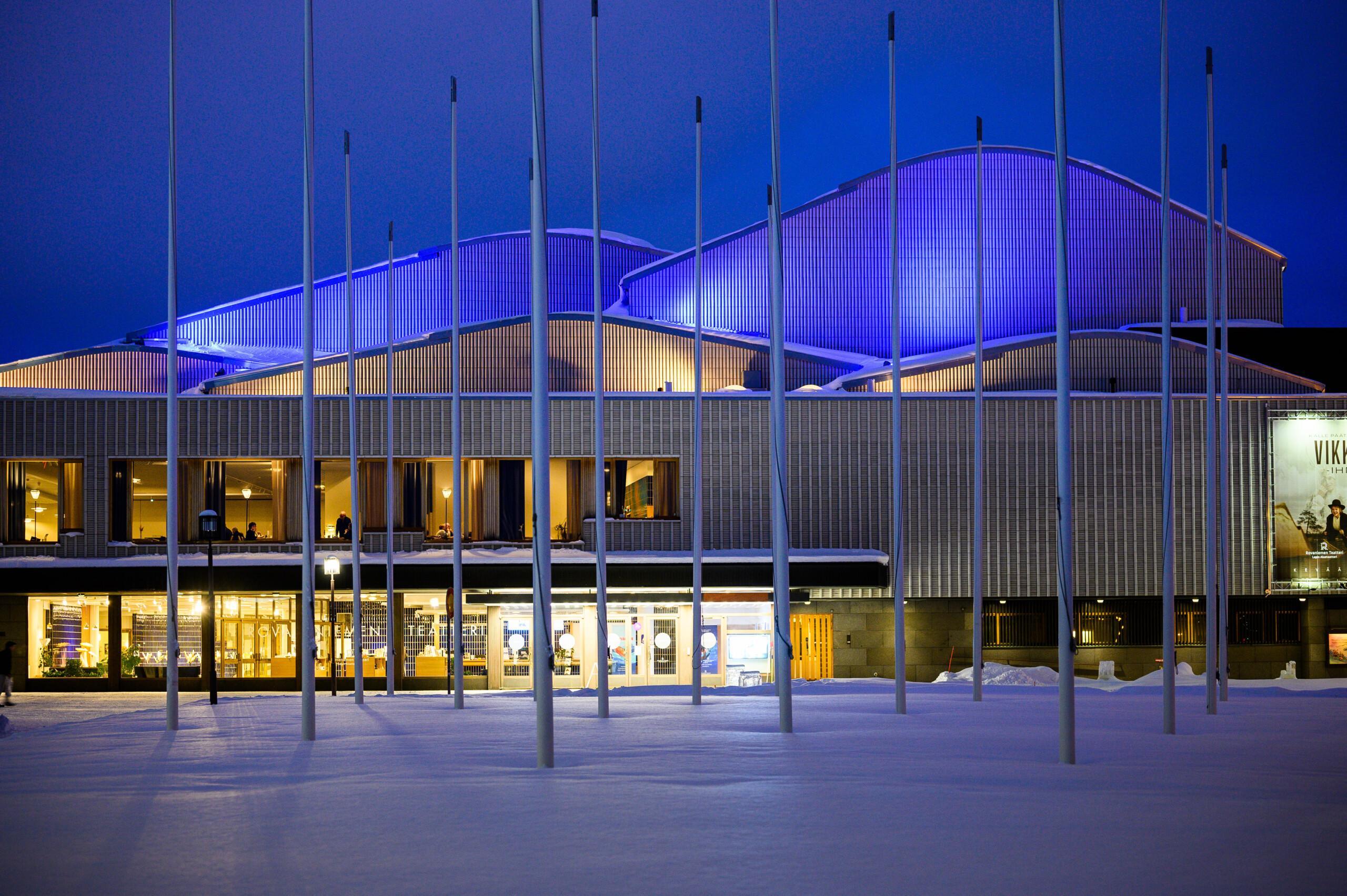
Lappia Hall is part of the Rovaniemi administrative and cultural center, the Aalto Center, designed by Alvar Aalto. The building is a well-known landmark of Rovaniemi. Lappia Hall was built in two parts. The first part, including the music school, was completed in 1972, and the main part of the building used by the theater in 1975. Lappia Hall was the last building that Alvar Aalto saw completed before his death.
The undulating roof structure of the building resembles the fell landscape of Lapland. The curved shapes of the roof are illuminated in different colors, and in its evening outfit Lappia Hall is a particularly magnificent sight. Lappia Hall is a total work of art characteristic of the Aaltos. Aalto’s office designed not only the building but also the interior and furniture. From the outside, the building is finished with light rod-shaped ceramic tiles.
The floor surfaces of the interior of the building are covered with Lapland marble and the interior walls are decorated with dark shiny cobalt rod-shaped ceramic tiles. The unique architecture of Lappia Hall is specially designed for the use of cultural actors. The Rovaniemi Theatre / Lapland Regional Theatre, the Lapland Music and Dance Institute and the Rovaniemi School of Visual Arts currently operate in the building. Over the years, Lapland’s regional radio and Lapland’s regional museum have also operated there. The comprehensive renovation of the building was completed in 2015.
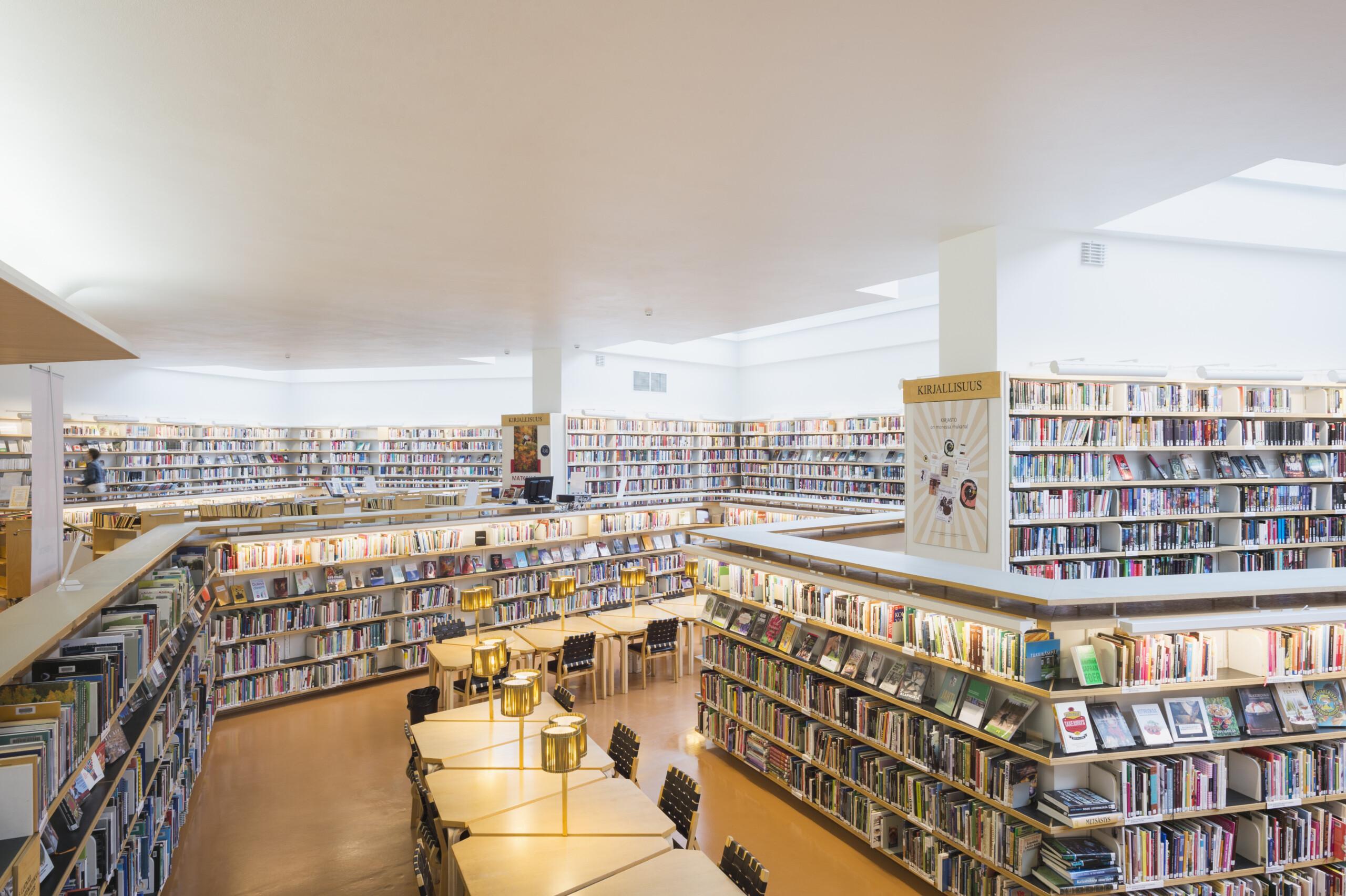
The library building, which was completed in 1965, was the first of the Rovaniemi administrative and cultural center buildings.
The Rovaniemi library consists of two connected parts: a fan-shaped library hall and an elongated, rectangular office wing. The interior design of the library followed the idea typical of Aalto’s libraries, where the library’s reading rooms were placed on a lower level than the rest of the library hall, in their own recesses. The goal of the hall’s fan-like shape is to enable the staff to have an unobstructed view of the entire hall. In addition to the library hall, the building contains, among other things, a music library, magazine rooms, an exhibition and auditorium hall, and a children’s section.
Natural light and lighting played an important role in the library’s plans. Indirect natural light is brought into the premises by various upper and roof windows and an exceptionally wide variety of fixed special lamps. This creates a great atmosphere in the building in the changing northern light, from dark winters to nightless nights in summer. Some of the furniture and lighting in the library are Artek’s standard models, but Aalto’s office also designed special furniture and at least 10 different lighting models for the building.
The Rovaniemi library is closed for the time being due to renovations that are scheduled to be completed in the summer of 2025.
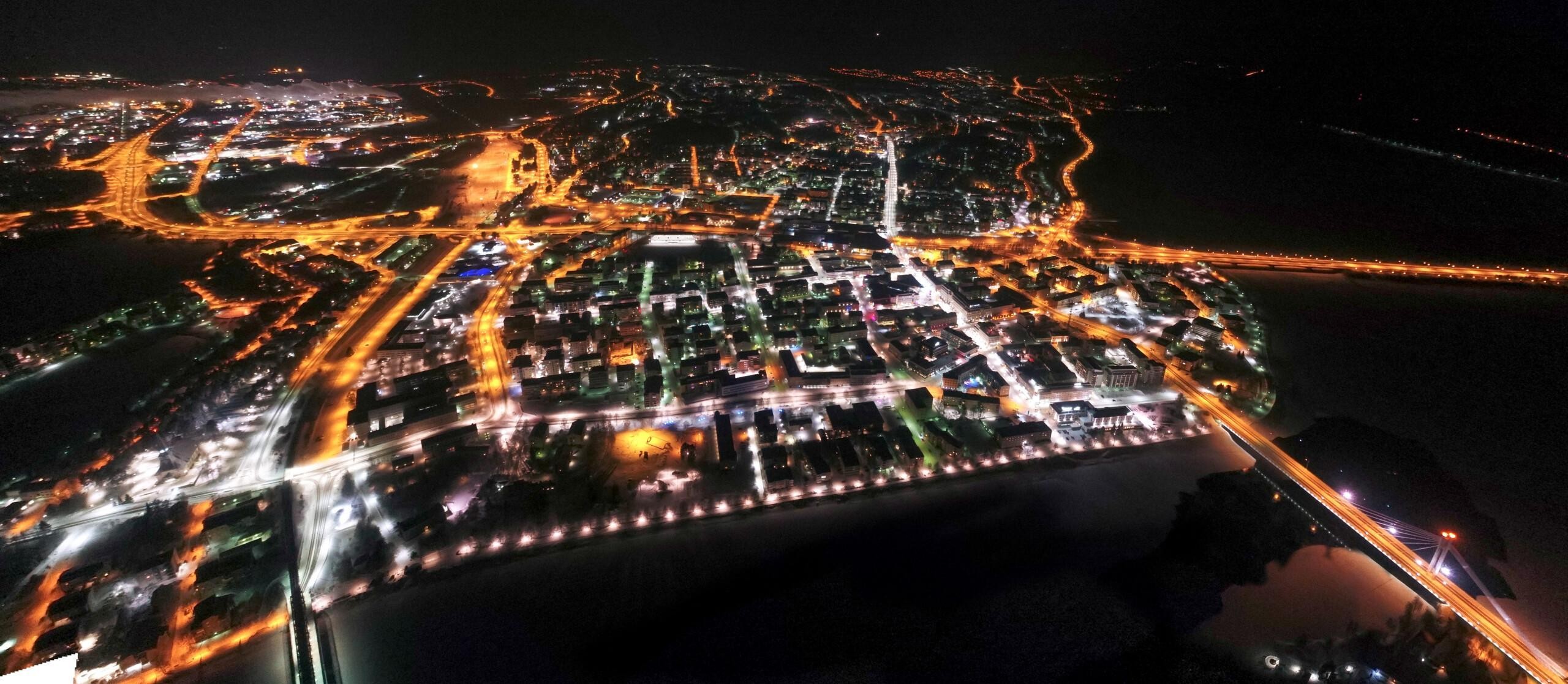
Alvar Aalto had strong ties to Lapland throughout his life. Aalto’s operations in Rovaniemi started from the ruins of the town destroyed in the Lapland War. The Second World War ended in Lapland with almost complete destruction. In Rovaniemi, 90 percent of the buildings were destroyed, and a huge reconstruction project was ahead. Alvar Aalto led the reconstruction office of the Finnish Architects’ Association.
In 1945, Aalto drew the famous reindeer antler city plan for Rovaniemi, the basic idea of which was both a strong commitment to nature and flexibility. The plan emphasizes Rovaniemi’s position as a traffic hub in Northern Finland. The plan gets its name from the figure drawn on the map. The roads leading to the north, west and south with parks around them, form the reindeer’s antlers and at the same time together with the Ounasjoki and Kemijoki rivers delimit the city center, which forms the reindeer’s head. The sports field in the center is the eye of the reindeer. Aalto’s original reindeer antler plan was not realized as such, but the figure of the reindeer is still recognizable.
Aalto’s main work in Rovaniemi is the administrative and cultural center – Aalto center – formed by the city library, the congress center Lappia Hall and the City Hall which was already founded in the reindeer antler plan. Aalto also designed residential and commercial buildings for Rovaniemi. The park-like residential area of Korkalorinne is called the Tapiola of Rovaniemi. In the center of Rovaniemi, Aalto designed several buildings for Aho’s businessman family, both for business and residential use.





